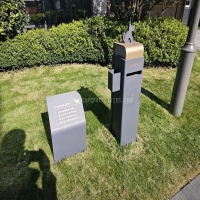Welcome to the website for landscape facilities products and knowledge.
What are the key factors in determining the bin’s optimal size for commercial use?
Choosing the right bin size for commercial use is crucial for efficient waste management. Several factors influence this decision, ensuring both cost-effectiveness and operational efficiency.
1. Waste Volume: The amount of waste generated daily is the primary determinant. High-traffic areas like restaurants or offices may require larger bins or more frequent collections.
2. Space Constraints: Available storage space dictates bin dimensions. Compact bins are ideal for tight spaces, while larger facilities can accommodate bigger containers.
3. Waste Type: Heavy or bulky waste (e.g., construction debris) needs sturdy, large bins, whereas lightweight materials (e.g., paper) may fit smaller ones.
4. Collection Frequency: Less frequent pickups necessitate larger bins to avoid overflow, while daily collections allow for smaller sizes.
5. Regulatory Compliance: Local waste disposal laws may specify bin sizes or segregation requirements, impacting your choice.
By evaluating these factors, businesses can optimize bin size, reducing costs and improving sustainability. Investing in the right bin ensures cleaner premises and smoother waste-handling processes.
Related search:

Recommendation
Outdoor cat and dog feces trash can; Community pet trash can; Metal multi-color design